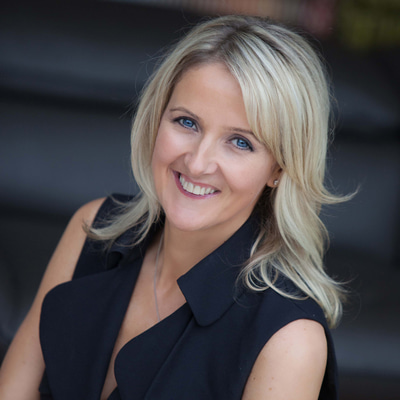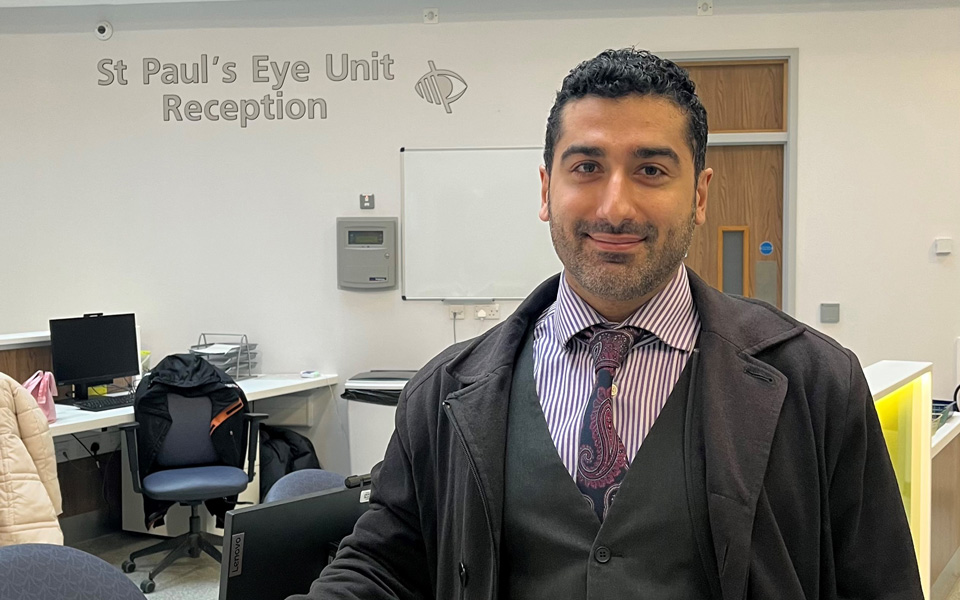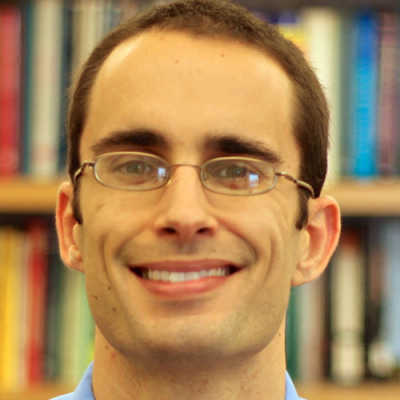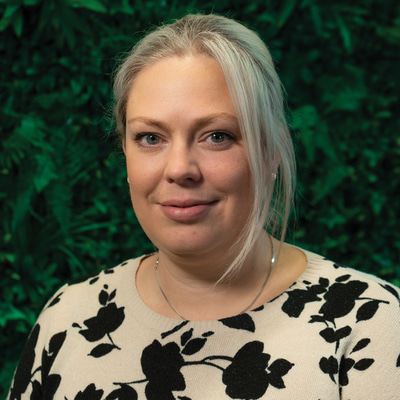- OT
- Life in practice
- Business management
- Positive practice
The cover story
Positive practice
From green spaces to flexible working and tackling discrimination, OT explores how optometrists can foster positive working environments today

When Dr Peter Frampton was growing up in Brisbane, Australia, he remembers the day an ancient gum tree was cleared to make way for a new school football pitch.
“All of us boys were standing around watching this tree go down and as it fell, the others cheered,” he said.
“I felt really upset. It offended me to see this magnificent tree, that had been there before colonisation, come down,” Frampton observed.
This formative sense of respect for the environment is now imbued in the practice that Frampton owns in Northumberland.
Aaron Optometrists recycles contact lenses and blister packs, and donates second-hand spectacles to charity. The practice uses repurposed packaging for deliveries, alongside corn starch and paper packaging that can be composted.
When Frampton is not cycling around town, he uses his practice’s electric vehicle, which is charged from solar panels on the roof of his home. He thinks of single-use contact lenses as daily recyclables, rather than daily disposables.
The big picture in business
Frampton told OT that sustainability informs all the decisions that he makes as a business owner. A practice mantra that he repeats to staff is: “Unscrupulous profit today means cost tomorrow.”This principle is true both from a customer loyalty perspective and an environmental standpoint, Frampton emphasised.
“If you don’t think about the upshot of what you are doing, there will be a cost further down the line,” he shared.
Times have changed since Frampton completed his first degree in environmental studies in Brisbane.
“Suddenly being an environmentalist has some level of kudos. During the 80s, it wasn’t like that at all – people thought I was just some weird dude,” he said.
Alongside the sustainability initiatives at Aaron Optometrists, Frampton makes an effort to engage with patients on the issue. He organised a practice visit for 18 members of the Ashington (St Andrew’s) Brownie Unit to learn about difficult-to-recycle plastics. Frampton also contributed written answers to questions about sustainability from a nine-year-old patient ahead of her meeting with a local MP.
Just start; achievable small steps lead to seismic change
During COVID-19, when Aaron Optometrists was operating on an appointment-only basis, patients could still tap on the door and hold up their bag of used contact lenses for recycling. Frampton highlighted that there are limits to the impact a single practice can have.
“While always striving to source ethical product, it is difficult, as a single practice with finite resources and funds to absolutely authenticate the environmental provenance of every product," he shared.
Now that Aaron Optometrists is part of Hakim Group's family of independent practices, Frampton is optimistic about the potential to catalyse broader change within the profession.
“With Hakim Group’s commitment and power base we can do a lot more,” he said.
“Everyone should try and do what they can. I think that sometimes it is too easy to close your eyes and think that it is too big a problem to contemplate. It is not – we can all help,” Frampton shared.
“Just start; achievable small steps lead to seismic change. Environmental awareness must define your practice ethos,” he emphasised.
Spearheading change among optical suppliers
In March, the Optical Suppliers Association’s sustainability committee launched its Green Charter, outlining a “practical and achievable roadmap” for optical businesses to reduce their environmental impact.
“Many businesses are willing but just don’t know where to start,” she said.
Optical suppliers across all sectors can sign up to the charter – from frames and lenses to practice equipment and health services.
Abel observed that there has been an “accelerated interest” in sustainability within the optical supplier industry over the past six months.
“Consumers are demonstrating an enduring appetite for sustainable products in other sectors and there is evidence that wearers seeking out eco-friendly eyewear will become an established and growing market share over the next two years,” she said.
Abel emphasised that it is no longer enough to talk about sustainability.
“We need to act now if we are to become a key player in instigating a positive change,” she said.
Abel, who is the co-founder and chief executive of British eyewear company, Eyespace, shared that she has “road-tested” many of the actions outlined in the charter within the Midlands-based business.
“They have been positive, satisfying and completely compatible with day-to-day operations. It starts with small incremental changes, but they add up and together we can all make a big difference and feel good about how our businesses are treating the planet,” she said.
She added that incorporating sustainability can have a positive impact on the work culture, by helping to attract and retain progressive thinkers within a business.
Abel shared that over the past two decades, the effects of neglecting the environment have begun to be felt in “undeniable ways.”
This has caused her to reflect on what will be passed on to her younger family members and colleagues.
“The effects of climate change are accelerating and will become a part of daily life in ways we can’t yet conceive, but we can substantially lessen their impact during our working lives. We can also evolve the industries we work in to become vehicles to a solution,” Abel highlighted.
Within optometry practices, Abel highlighted simple wins can be made by switching to renewable energy sources, reducing waste and integrating sustainable products through the practice.
Consumers are demonstrating an enduring appetite for sustainable products
Practices can choose to review their product portfolio and assess whether they are selecting the most environmentally-conscious suppliers.
Abel added that checking for independent certification, such as ISO standard accreditation, is important to avoid greenwashing.
“For example, carbon off-set initiatives help repair and restore the planet but are not a solution to unsustainable supply chain processes,” she explained.
Abel shared that suppliers are launching and refining more sustainable service lines – such as frames and cases made with bio-acetates or recycled materials.
“Ask your suppliers what sustainable products and services they offer; the more they are asked, the more they will grow these parts of their business,” she recommended.
Lastly, Abel highlighted that consumers and businesses need to become comfortable with a minor surcharge on sustainable products – which is negligible when viewed in the context of inflationary pressures.
“It has quickly become the norm for customers to pay for a bag at a supermarket and not think twice about it and this is much the same,” she said.
“Sustainable products and packaging are more competitively priced than ever and will become more so, but only if we increase the volumes we buy,” Abel concluded.
The benefits of green spaces
The hospital wards and cafeteria had a view of a large lake where Ghadiri’s colleagues would sometimes go windsurfing after work.
“It affected me in subtle ways that I couldn’t quite quantify then. I gradually realised what I was feeling and noticed the reduction in stress from being able to see nature, water and sky,” he said.
Moving between different hospitals in the UK as he completed his training, Ghadiri chronicled his favourite healing gardens through a photo essay published on The Guardian website.
Ghadiri told OT that the latest NHS survey found that around half of staff are experiencing work-related stress.
“For nurses, doctors and optometrists, anecdotally we have found that there is reduced burnout when there is a green space. Plants can provide psychological comfort and awaken your senses. They provide a chance to practise mindfulness,” he shared.
A 2018 study published in the American Journal of Critical Care found that taking daily work breaks in a hospital garden could help to mitigate the risk of burnout among nurses.
Anecdotally we have found that there is reduced burnout when there is a green space
Ghadiri also advocates for the benefits of artwork in clinical spaces. While working as a junior doctor in the east of England, he recalled the impact that seeing illustrations and paintings.
“As I was rushing between wards or clinics, I started appreciating how much my own mood improved and my stress levels went down when I saw some art on the walls,” he said.

Ghadiri acknowledged that optometry practices have greater restrictions on space than a hospital environment. However, he emphasised that ring fencing even a small area can have a significant impact on staff and patients.
“Even single plants can make a lot of difference. They provide a link to nature and integrate the natural world into what might otherwise be a sterile environment,” he said.
Wall art, frame displays or a mini historical exhibition can be used to enhance the atmosphere of a practice, Ghadiri added.
“Art can provide a pleasant distraction from the stress and anxieties of work. It can be something to think about or quickly practise mindfulness with,” he said.
Step change
In January, Dr Keith Diaz and colleagues at Columbia University published new research investigating the effect of small “exercise snacks” during prolonged periods of sitting.For five days, a group of 11 older and middle-aged adults completed periods of light intensity walking over an eight-hour day where they were otherwise sitting down.
On each day, the group would take a different type of walking break: either every 30 minutes for one minute, every 30 minutes for five minutes, every 60 minutes for one minute or every 60 minutes for five minutes.
On the fifth day, the group spent the eight-hours sitting down with no walking breaks.

“I think we expected to find that walking breaks would have some health benefits, and that it would offset some of the harm of sitting. I was surprised by how much of an effect there was,” he said.
Taking a walking break for five minutes every half hour reduced the surge in blood sugar after eating by 60% – the same kind of reduction you would see with a diabetic receiving an insulin injection.
This type of walking break also reduced blood pressure by four to five points, an effect that you might see after going for a run, swim or cycle.
The other unexpected result that Diaz observed was the benefit of very low doses of walking. For example, taking a one minute walk every hour still reduced blood pressure by four to five points.
While the most effective dose was a five minute walk every half hour, Diaz acknowledges that this type of break may not be practical for people in many workplaces.
The next study will investigate the effectiveness of 25 different strategies, with the aim of providing tailored solutions that will work for most individuals.
“If you are someone who is a truck driver, your job will not allow you to take a walking break every half hour. What do we do for those situations?” Diaz shared.
“Our belief is that there is not going to be one solution for everyone – there will be multiple solutions. A person would be able to pick and choose based on their lifestyle and workplace,” he said.
Turning to his advice for employers, Diaz highlighted that there is a growing body of evidence showing that sitting for extended periods is an occupational hazard.
“The simplest thing is to structure your workers’ day so that is allows them to have movement and walking breaks away from their desk,” he said.
He emphasised the importance of managers within the workplace leading by example, as they are the ones that set the social norms.
Diaz observed that during previous interventions encouraging employees to incorporate movement into their working day, one of the common barriers was a sense of awkwardness.
“When we ask people why they did not act on a reminder to take a walking break, one of the things that people say is that it would have been uncomfortable or it is not socially acceptable,” he said.
“You have to work to build that workplace culture where it is socially acceptable to have a walking meeting or you can stand up in the middle of a conversation,” he said.
Diaz highlighted that people who have sedentary jobs and then complete periods of intensive exercise still need to consider how to incorporate activity into their working day.
“It is not as simple as ticking off a box and saying ‘Oh I exercised today – I’m done.’ The reality that we are learning is that your body wasn’t designed to be idle for long periods of time,” he said.
“What we are realising is that exercise is the tip of the iceberg. Even if you did 30 minutes a day, that is 2% of the day. What you do with the rest of your day, the other 98%, also matters,” he said.
There is office furniture that can help employees to become active – such as treadmill or cycling desks.
Your body wasn’t designed to be idle for long periods of time
Simpler interventions may be to take a smaller water bottle to work requiring more frequent refills or to get up from your desk to ask a colleague a question rather than sending an email.
Even though Diaz is an expert in the science behind sedentary behaviour, he also has days where he struggles to incorporate as much activity as he would like to.
Part of this is driven by a culture where sitting is the default position.
“Since the time you are old enough to go into school, our culture has said ‘You are supposed to sit’,” he observed.
“But when we are kids that is not our default position – we like to move and we can’t sit still. We have trained our bodies to think that sitting is the natural state and it can be hard to break free of that,” he said.
Fostering flexible workplaces
Across many professions and industries, there was a shift to flexible working following the COVID-19 pandemic.
Working patterns that were initially introduced to stem the spread of infection have lingered following the easing of restrictions.
Within optometry, there are roles and tasks that are incompatible with home working, while there has traditionally been an expectation to work weekends in many practices.

“We believe the pandemic acted as a great reset for the candidate market, with multiple employee wellness surveys finding that staff value work-life balance above salary,” she said.
Post-pandemic, Fowler has observed an increase in people discussing work patterns that suit their lifestyle at recruitment stage.
“We’ve also seen an increase in people looking for part time opportunities at all stages of their career,” she said.
Ross Campbell, an optometry partner with Specsavers practices in Northallerton and Swaledale, described COVID-19 as a “seismic event” when it comes to work-life balance, but his practice has always promoted a balanced approach.
Staff at Specsavers in Northallerton and Swaledale work full-time, part-time, school hours only, term-time only, and variations in between.
“We’ve always engaged optometrists on contracts that work for them,” he said.
Optometrist, James Carolan, works from Wednesday to Saturday at Specsavers Wilmslow.
Having a three-day weekend enables the Cheshire optometrist to visit his family in Northern Ireland regular without taking annual leave.
“For me, flexible working is one of the benefits offered by optometry and I've found it generally makes for better career satisfaction,” he said.
Retail manager at Specsavers Wilmslow, Rob Cox, shared that some staff within the practice work Monday to Friday to fit in with other family members’ schedules, while other staff only work on weekends to align with childcare commitments.
Tackling discrimination in practice
In 2021, the Muslim Doctors Association published a report exploring the experiences of 150 healthcare professionals.
Excluded on the Front Line: discrimination, racism and Islamophobia in the NHS reported that four in ten survey respondents had received verbal abuse linked to their religion, while eight in 10 had experienced negative assumptions related to their religion.
Four in ten respondents felt like they needed to compromise in practising their faith at work. Almost half of those surveyed said that they had considered leaving the profession.
“These were really concerning findings – that colleagues felt they had no option but to leave,” chair of the MDA, Dr Hina Shahid, shared with OT.
“In the current climate, of workforce crisis and shortages, retaining staff is something that we need to focus on,” Shahid emphasised.
Within optometry, around one in five dispensing opticians and optometrists is Muslim (18%). Close to four in 10 (38%) optometry students are Muslim.

The MDA was established in 2004 as a small community organisation. It has since expanded to undertake regional, national and international projects with a focus on health promotion, health policy and promoting equality, diversity and inclusion within the NHS.
As well as doctors, a range of healthcare professionals are included within the MDA membership – including dentists, optometrists, psychologists and pharmacists.
Following the pandemic, the MDA wanted to understand what healthcare workers were going through on the frontline.
“We did quite a lot of work to look at how Islamophobia was showing up during the pandemic,” Shahid said.
“We wanted to understand what these chronic daily stresses and experiences of Islamophobia were like,” she elaborated.
Experiences uncovered through the 2021 survey range from workers feeling overlooked or isolated because of their religion, to physical and verbal abuse.
“In general, the report showed that Muslim healthcare professionals face prejudice and microaggressions that targeted multiple aspects of their religion and beliefs,” Shahid shared.
Respondents reported hearing derogatory remarks about different aspects of their faith – from prayer breaks and fasting, to saying no to alcohol and pork.
Shahid emphasised that Islamophobia presents on a spectrum within the workplace.
There are more obvious aspects – such as direct discrimination, harassment, bullying and abuse ¬– but there are also more subtle forms of Islamophobia, including stereotypes, prejudices, assumptions and biases.
“A lot of the day-to-day experiences of Islamophobia are under the surface. They are not visible,” Shahid shared.
“Colleagues may say they do not feel included and welcome when they start a new job. A lot of networking may take place in environments where alcohol is served and that can influence career progression,” Shahid said.
She highlighted that experiences of discrimination can make healthcare workers like they do not belong.
“Time and time again there is the feeling that you have to go over and above to prove yourself, because there is an assumption that you are not competent. The burnout and the stress that this causes is a recurrent theme,” Shahid observed.
I think you can ask questions with compassionate curiosity
Shortly after Shahid began wearing a head scarf, she was walking back from a home visit when a patient poured alcohol over her. She contacted the police about the attack but ended up dropping the case.
“You feel like you have a duty of care for patients but then you end up being mistreated – how do you balance those two aspects?” Shahid shared.
The 2021 survey found that three in five respondents had experienced discrimination from patients. Respondents described patients who would refuse to be seen by a Muslim healthcare professional.
Four in 10 respondents felt like they needed to compromise in practising their faith.
Shahid highlighted that there is a mental burden if people have to hide parts of their identity when they come to work.
“We want people to bring their whole self to work – to thrive and flourish in a job that they love. It takes the joy out of working if you have these experiences of discrimination,” she said.
Positive change
Within the 2021 MDA report, a 12-step action plan details practical advice for employers in reducing Islamophobia within their workplace.
Recommendations include implementing an Islamophobia zero tolerance policy, reforming recruitment policies and celebrating diversity within the workplace.
“How inclusive is the social culture in the workplace? Can Muslim colleagues take time off for prayer and religious festivals? These are some of these are things that employers and organisations can think about,” Shahid shared.
On an individual level, Shahid highlighted the importance of being aware of assumptions that people may have about Muslim staff and challenging those assumptions.
Shahid is happy to answer questions about her faith as long as there is respect and openness on both sides of the conversation.
“I have had colleagues who are genuinely interested in my faith and why I do certain things – why do I wear a headscarf? Why do I fast?” Shahid shared.
“The last thing I would want is for people not to ask out of fear of being politically incorrect. I think you can ask questions with compassionate curiosity,” she emphasised.
Shahid encouraged Muslim optometrists who experience discrimination to prioritise their own wellbeing and seek out support – either formal or informal – if needed.
“It is important to understand that those experiences, even if they are covert, are real,” she said.
What can you do?
Four strategies for intervention when you witness discrimination
Direct action: directly intervene, for example, by asking the person to stop. Call out negative behaviour explaining why it is not appropriate.
Distraction: indirectly intervene, for example, by interrupting to change the focus or subject. Useful if direct intervention could be harmful to the target or bystander.
Delay: wait for the situation to pass and check in with the individual. Take action at a later stage when you have had time to consider what occurred.
Delegation: inform a more senior member of staff who has the social power and authority to manage the situation.
Source: Imperial College London
Advertisement



Comments (0)
You must be logged in to join the discussion. Log in